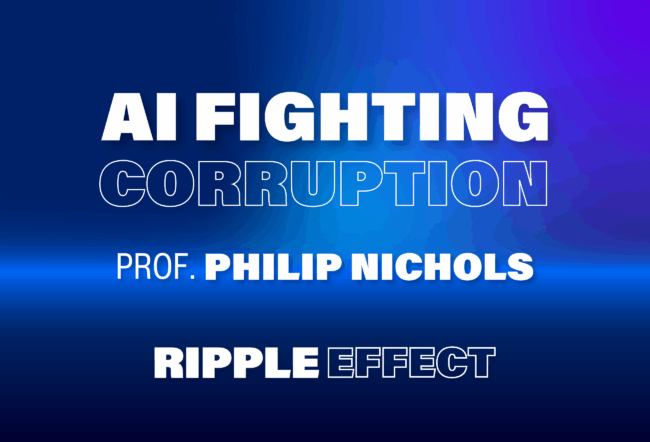Apple released the latest iterations of its products last week in a highly anticipated rollout that was met with mixed reviews. Tech junkies, business analysts and industry forecasters hailed the products — which include the iPhone 8, iPhone 8 Plus, the pricey iPhone X and the Apple Watch Series 3 — as either dazzling successes or ho-hum disappointments. The range of reactions is not surprising considering the pressure on the company, which has built a hyper-loyal customer base on its ability to marry innovation with marketing. But a question remains on whether this batch of new products is enough to keep the company moving forward or whether Apple is finally losing momentum after years of ruling the gadget world.
Wharton experts said it’s important to analyze the company’s market position from the right perspective. While continued success is never a foregone conclusion, Apple seems well poised to keep its perch at the top.
“Smartphones are now mature products. There simply aren’t going to be massive innovations in the devices themselves every year,” said Kevin Werbach, Wharton professor of legal studies and business ethics. “Apple is in the dominant position that Microsoft was in for many years in the personal computer market; they have to keep moving forward, but they don’t need transformative innovation to maintain their market position. In fact, with their massive customer base, they can’t afford to promote far out features that a segment of cutting-edge users love but the mainstream sees as unnecessary or excessive.”
Saikat Chaudhuri, Wharton adjunct management professor and executive director of the Mack Institute for Innovation Management, agreed that there isn’t much new in the world of smartphones. He said Apple followers must keep in mind that the company has entered a different phase under the leadership of Tim Cook. Founder Steve Jobs, who was lauded as a pioneering visionary, died from cancer in 2011.
“It’s a bit harsh to compare Apple’s current run to Steve Jobs’s era, both at personal (CEO) and organizational levels,” Chaudhuri said. “No successful company that we’ve seen throughout history has been able to come out with revolutionary, category creating products every few years. Rather, the key to sustainable success over time is to balance incremental innovation that leverages existing products with investing in revolutionary innovations, which periodically disrupt the market. In the process, a firm needs to keep adapting and transforming itself, which includes shedding businesses that may have been cash cows in the past or even tied to its origin.”
“Smartphones are now mature products. There simply aren’t going to be massive innovations in the devices themselves every year.” –Kevin Werbach
Apple has done exactly that by jettisoning some of its products, including most iterations of the iPod, which was wildly popular when it was introduced 15 years ago. But the mp3 player has become obsolete as consumers increasingly listen to music through their smartphones. It’s a trend that Apple recognized and, in fact, brought into the mainstream with the introduction of the iPhone.
Increased Functionality
While the just-released products may not hit the revolutionary bar once set so high by Apple, they are being lauded for their increased functionality. The iPhone X has wireless charging, facial recognition technology and no home button. Users simply tap the phone to return to the home screen. Wharton management professor David Hsu said Apple’s dive into facial recognition technology is significant because it shows the company is exploring the next frontier.
“One thing that’s clear that’s been underplayed in the media is the reliance on the neural net technology that’s associated with this,” he said. “That’s a branch of artificial intelligence, and the fact that you have this authentication through this new form is quite exciting. We already saw a glimpse of things like how that’s going to pair with the animated emoji, etc.”
However, Hsu expressed concern over privacy issues with the new feature. Apple has said the face-recognition information will only be stored locally to protect user identities. But doing so limits the system’s ability to create a feedback loop and learn from itself, Hsu said. It’s unclear yet how Apple will tackle that challenge.
Loizos Heracleous, a professor of strategy at the Warwick Business School near London, noted that the Apple Watch Series 3 pushes more health apps, connectivity and convenience. The watch for the first time will be able to make calls and access the internet without requiring the user to carry an iPhone.
“We should say that none of the things that Apple introduced [previously] actually were groundbreaking technologically,” he said. “It was groundbreaking in terms of design and creating a market by giving people products they enjoy using. We already had mp3 players, we already had mobiles, we already had tablets before. I think Apple’s skill is design innovation, user experience innovation. They are trying to do the same with the watch.” (Both Hsu and Heracleous made their remarks during an interview on the Knowledge at Wharton show on Wharton Business Radio, SiriusXM channel 111. Listen to the full podcast at the top of this page.)
Sticker Shock?
One of the more breathtaking moments in the September launch was the price point of the iPhone X. The stainless steel device with an edge-to-edge glass screen will retail at $999. Is that simply too much money for the average consumer? Hsu said yes, considering a U.S. Census report released this month that calculated the median American household income at $59,000.
“I think apple’s skill is design innovation, user experience innovation.” –Loizos Heracleous
But Apple will undoubtedly find a customer base for the X. Hsu likened the varied price-point strategy to that of airlines that offer premium seats for significantly more money than coach. There will always be passengers who can afford such fares and are willing to pay more for the amenities, and that is lucrative for the airlines.
“So long as [Apple] can play well among that set of consumers, it seems like it’s doing pretty well towards its march as a $1 trillion market capitalization company,” Hsu said.
Forward Thinking
The professors point out that Apple isn’t just in the business of pushing out products. The company is investing in new platforms and acquiring different aspects of the supply chain to create its own parts. That strategy shows Cook is thinking about the future.
“The advantage that Apple has, that in a way goes against the recipe of Silicon Valley, is to have a whole ecosystem of hardware and software and services, whereas many other companies will specialize,” Heracleous said. “Apple claims that this enables it to offer more similar services, and I think it’s a valid claim. I think other companies trying to offer these other services will be at a slight disadvantage because they do not already have a basis of high-level knowledge of those things, unless they do targeted acquisitions and unless they manage to integrate those acquisitions effectively. Apple is already halfway there, and that is the competitive advantage that Apple has in this respect.”
According to Werbach, Cook knows something will come along to destabilize the smartphone market in the same way that Apple disrupted the feature phone market.
“If there is another Steve Jobs alive today, she’s at a company trying to knock Apple off its pedestal.” –Kevin Werbach
“That’s why it’s investing in media, augmented reality and the watch as a health-monitoring device,” he said. “Any of those, especially the last two, could shift the market away from who has the best phone and app ecosystem. Apple wants to innovate there before someone else does. Those products won’t be significant until they reach critical mass. But the innovative things coming from Apple today are not the phones — they are the semiconductors, wireless and battery engineering, augmented reality and retail experiences. And the biggest decision the company faces has nothing to do with iPhone features or pricing; it’s what to do with a quarter-trillion dollars of cash.”
Despite Apple’s apparent investment in its future, threats to its success are ever-present, like sharks circling in the water. The next Steve Jobs is out there, somewhere, waiting to be the next disruptor.
“Everyone wants Tim Cook to be Steve Jobs, but remember, Steve Jobs was at his best as the brilliant outsider,” Werbach said. “Apple’s DNA was built around creating products that were better and more elegant than the gray boxes of the mainstream providers like Microsoft and IBM. Now, Apple’s the dominant player. If there is another Steve Jobs alive today, she’s at a company trying to knock Apple off its pedestal.”



